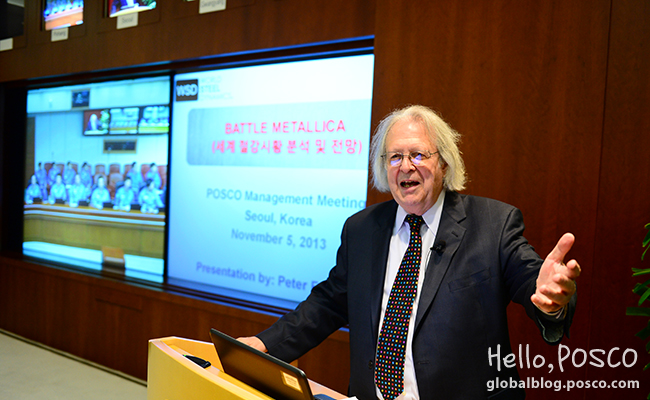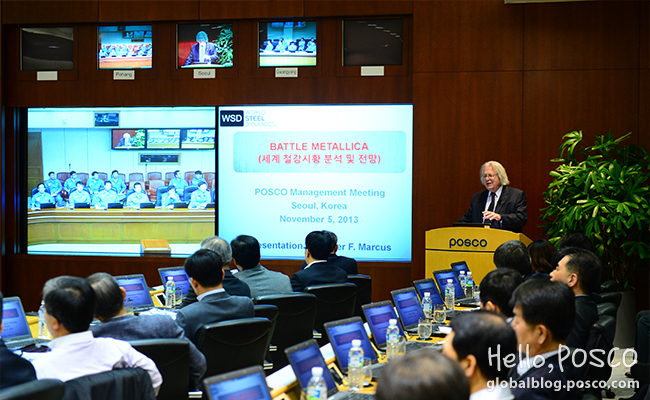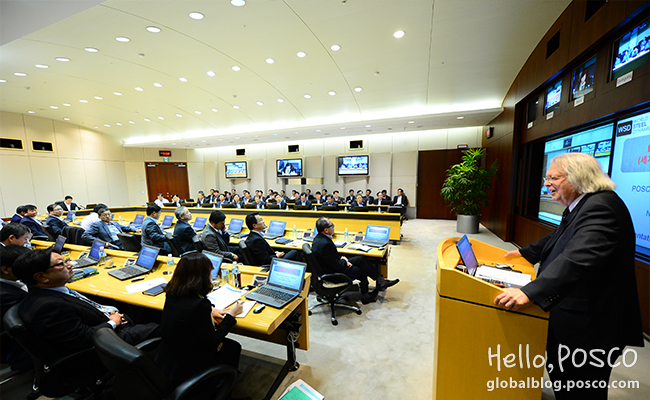Founder and Managing Partner Peter Marcus of WSD (World Steel Dynamics), a global analysis organization specializing in the steel industry, visited POSCO Center on November 2nd to give a special lecture under the theme ‘Battle Metallica (Analysis and Prospects of the World’s Steel Market).’

Peter Marcus said in his lecture, “POSCO was able to succeed as a global steelmaker because it has its own unique corporate culture,” emphasizing the importance of continuously developing POSCO’s unique and great corporate culture.
In addition, he mentioned the importance of continuous R&D investment activities to maintain competitiveness, explaining, “5 companies globally, POSCO, NSSMC (Nippon Steel & Sumimoto Metal Corp), JFE, CSC (China Steel), and Baoshan Iron & Steel, are showing competitive R&D activities.”

He also pointed out that the steel industry today is facing an extremely difficult environment, forecasting that the growth engine from China will be exhausted while the remaining power for new growth of BRICs will not be sufficient, thus the downcycle of the steel industry will continue until around 2018.


In the long term, scrap production supply from China will increase rapidly while DRI (Direct Reduced Iron) competitiveness will recover due to shale gas, leading to distinct competition between iron sources forecasting a decline in material costs such as iron ores, DRI, and HBI (Hot Briquetted Iron).
In the mid- to long-term, increases in steel demand will be prominent in the Middle East regions rather than China, where steel production will increase 1.5% annually from 1,574 million tons in 2013 to 1,873 million tons by 2025.
Lastly, Marcus forecast that there is a high chance that the increase rate of steel demand in China will stagnate at less than 1% until 2025, and that the increase rate of annual steel production will reach 7.9% until 2014 but only 0.59% for the ten years after 2015.
Marcus explained that this is based on the decrease of GDP growth rate, decline in demand due to the depreciating construction economy, and weakened export competitiveness due to a strong Chinese yuan value.
